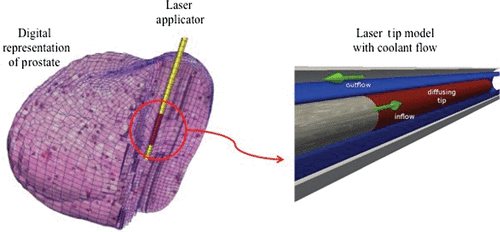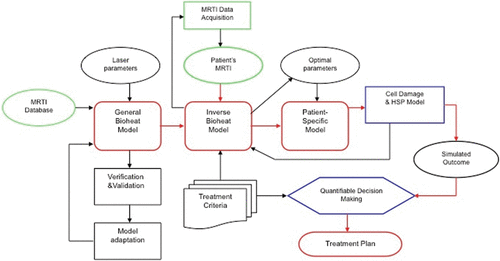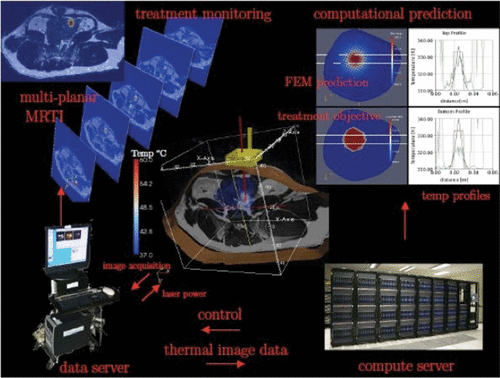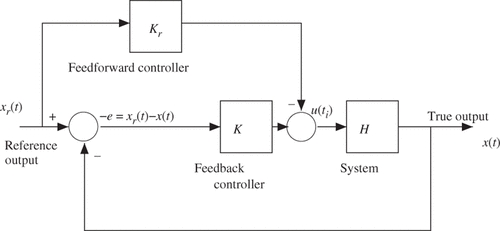Figures & data
Figure 1. Illustration of relative position of laser applicator with respect to the digital representation of a prostate (left) and detailed model of the active cooling achieved by a coolant running at ambient temperature around a photon emitting diffusing laser tip (right).

Figure 2. MRTI-driven computational framework: core modules include bioheat transfer inverse bioheat transfer, and patient-specific models. On the left of the flow chart, laser parameters and MRI/MRTI data were input to the bioheat transfer model that will be validated. The middle section of the flow chart illustrates how the optimal laser parameters are obtained based on patient-specific data during the treatment. The right side of the flow chart depicts the decision-making process based on predicted treatment out comes. The framework supports quantifiable decision-making for treatment planning and real-time surgical monitoring and control.

Figure 3. An Illustration of work flow for model-based real-time control of laser therapy. Based on the pre-operative MRI scan and initial optimisation, the laser probe is place to the specified location. During the treatment, multi-planar MRTI scans are acquired for monitoring. These data are also used to calibrate the computational model to reach a preset tolerance of accuracy before a predictive control sequence starts. The control parameters optimised in real-time using supercomputers are transmitted to the data server that controls the laser probe. Both computational (FEM) model prediction and treatment objective are display on the screens in the operative room.

